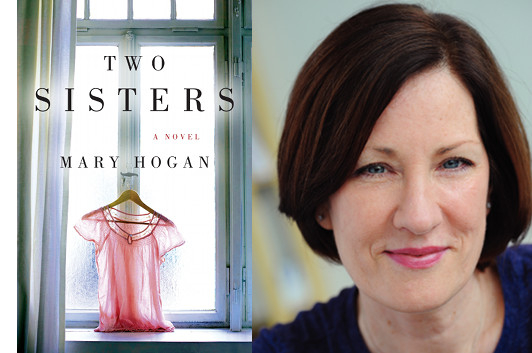Mary Hogan: An Author Grows Up

photo: Mark Bennington
I met Mary Hogan (no relation) at a book party last summer, and we got to talking about how she had a new novel, Two Sisters, coming out in early 2014. Although she’d been writing young adult fiction for several years, this would be her first novel aimed explicitly at adult readers—well, I wondered, what does that transition feel like for a writer, in the process of writing and then again as it’s being published? Here’s what she has to say on the subject…
When I wrote my first novel, The Serious Kiss, I had no idea I was writing “teen” fiction. Query letters to agents would come back saying, “Sorry, we don’t handle Y.A.” I thought, “What the hell is YAH??” Seriously, I was clueless. In my mind, I had written a story about a 14-year-old girl who was trapped in her crazy family. Admittedly, she was a girl who—like me at 14—longed for a meaningful lip-lock. Still, there were adult themes of alcoholism and family shambles. They just happened to be viewed through a teenager’s eyes.
Indeed, I was young(er) and naïve then. But a quick study, too. Once I discovered I was writing in the teen genre I found out what I needed to know. Seeking the advice of a middle school librarian, I asked, “Are there rules?” Nodding emphatically, she said two words: Sex and swearing.
“If you want your books to be read in schools,” she said, “and you DO, no sex and no swearing. Remember, you’re writing for parental approval as well as teen enjoyment.” Damn! I thought, instantly. It felt so… limiting.
Not every YA author follows the “rules”. In fact, being banned from a middle school library is a badge of honor among some. But I rather liked the idea of writing teen characters who were smart and articulate. The first line of The Serious Kiss is, “My father drinks too much and my mother eats too much which pretty much explains why I am the way I am.” Look ma! No swearing!
For me, the kids didn’t need to display bad behavior when the parents did it for them. That strategy, and a lot of luck, got me a great YA agent and publishers for seven young adult books. (Pssst! I did slip a wee bit of s.e.x. into Pretty Face, but how could I not? She was in Italy! It was beautiful Enzo!)
Years later, when I began to write adult fiction, I expected to feel liberated. A little naughty, even. I thought I’d want to write orgy scenes and diatribes that would make Louis C.K. blush. Of course, as I sat down to write my first mainstream novel, Two Sisters, I discovered what most young adult authors already know: There is little core difference between a good teen novel and a good novel for their parents. It’s all about story, character development and voice. Make them all believable, relatable and readable and you’ll find an audience, no matter what the age. No swearing or sex needed…unless need be. (See above RE: Enzo.)
Curiously, however, a little somethin’ somethin’ did surface when I crossed over from Young Adult Author to Author. Just that. The qualifier to my job description. At cocktail parties, I would be introduced as a “novelist” instead of a “teen fiction author”. I thought it was just a social anomaly until a good friend congratulated me on my Two Sisters book deal by squealing, “I’m SO happy for you! A real book!”
Even my publisher, William Morrow, an imprint of my teen book publisher, HarperCollins, has labeled Two Sisters (my eighth book) my “debut” novel. Had I been fooling myself? Is teen writing really publishing’s ugly stepsister? Did I have a wart on my nose all these years?
I think not. I’ve always considered my books—and many other young adult novels—to be fully-realized, meaningful works. (If written today, The Catcher in the Rye would be labeled YA.) Read Holes, Tyrell, Cirque Du Freak—all great teen novels. In fact, the raw intensity of adolescent “firsts” provides such rich material I miss it in the more nuanced rendering of adult characters. What’s a more gripping emotion than first love?
The takeaway is this: Good writing is good writing in whatever form it takes. I swear.
23 March 2014 | guest authors |

 Our Endless and Proper Work is my new book with Belt Publishing about starting (and sticking to) a productive writing practice.
Our Endless and Proper Work is my new book with Belt Publishing about starting (and sticking to) a productive writing practice. 
